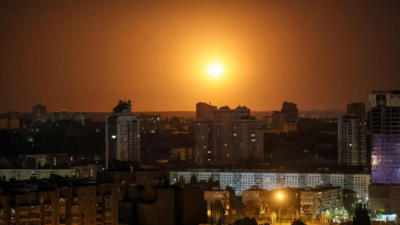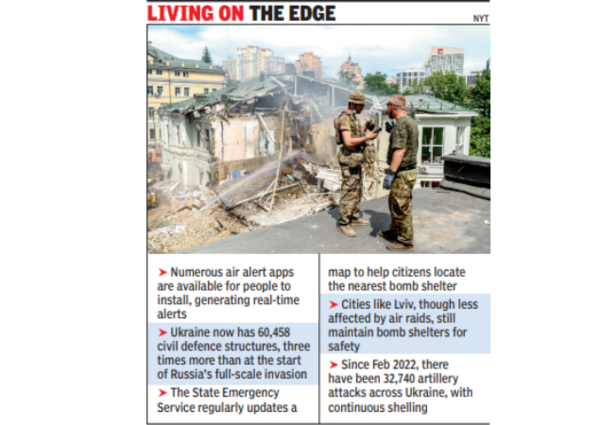
KYIV: In the early hours of September 26, the familiar sound of air raid alerts filled the skies over Kyiv, starting at 4.30 am and lasting until 7.30 am. Residents once again took refuge in bomb shelters as Russian drones targeted the capital, leading to explosions across several districts. For many, sleepless nights have become routine as drone attacks and air raid warnings disrupt the city’s rhythm.
The full-scale scale war, which began in Feb 2022, continues with full force, with Russia regularly sending drones into Ukrainian airspace. The people of Kyiv and other regions have become accustomed to hours spent in bomb shelters, especially at night. While some have grown immune to the alarms, choosing to stay at home despite the danger, others continue to face the stress of running for safety every night.
“I heard the Shahid engine just minutes ago, followed by air defence shots,” said Volodymyr Solovian, a hybrid warfare analyst in Kyiv. “These drones usually move behind the Dnipro river, and this time I saw air defence tracers over the Dnipro. Drone attacks on Kyiv have become frequent, happening five or six times a month.”
The scale of the aerial threat is immense. According to official data, from February 24, 2022 to September 25, 2024, a total of 47,577 air raid alerts were issued across 141 Ukrainian districts. Of these, 1,270 alerts were in Kyiv, with the average alert lasting one hour and nine minutes. The longest recorded alert lasted an exhausting 50 hours and 30 minutes. Most air raids are triggered between midnight and 6 am, and officials imposed curfew round the year during these hours.

Out of all the alerts, around 12,740 explosions were reported, meaning that about one in four warnings turned into actual missile or drone strikes. These figures exclude artillery shelling, which has also become a constant threat in the eastern region of Ukraine bordering Russia. The regions of Donetsk, Kharkiv, and Zaporizhzhia have seen the highest number of air alerts, while Kherson, Sumy, Donetsk, and Kharkiv have reported the most explosions.
Iryna Valenkeych, a 70-year-old resident of Borodianka, spoke of the fear that grips her every night. “Every day is a nightmare,” she said. “We are afraid when we go to sleep. Air alerts sound six times a night. We are scared.” She recounted the story of her family where her brother was killed by Russian forces earlier in the war, making the nightly alarms even more terrifying.
In Kyiv and Lviv cities, bomb shelters have become an essential part of daily life. Converted cellars and underground floors of commercial buildings are now used as safe spaces. Metro stations serve as a refuge for many urban residents. In the village of Moschun, in Kyiv region, even an underground billiards room has been turned into a shelter.
The impact on children is especially concerning. Inna Sovsun, a people’s deputy (member of Parliament) from the opposition Holos Party, described the strain on her 11-year-old son. “We live in constant fear of air raid alerts. The children are under extreme pressure. In Oct 2022 my son asked me if we were going to die during one of the alerts. He was scared it might be a nuclear bomb. It’s heartbreaking that kids are being taught how to survive a nuclear attack at school,” she said.
As Kyiv and other regions across Ukraine continue to face relentless air attacks, Ukrainian air defence forces are working to intercept the drones.
While Kyiv remains under constant threat, residents are doing their best to cope with the daily uncertainty and fear, hoping for a time when the air raid alarms fall silent for good.
